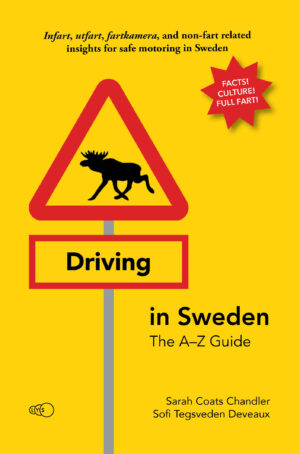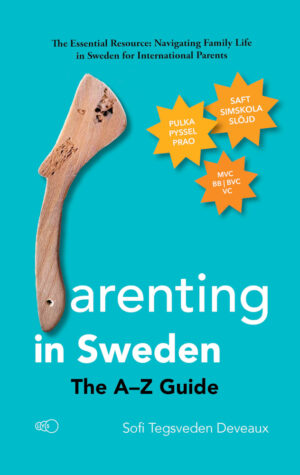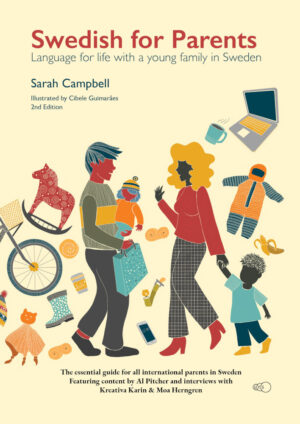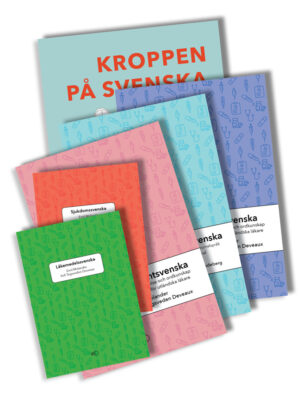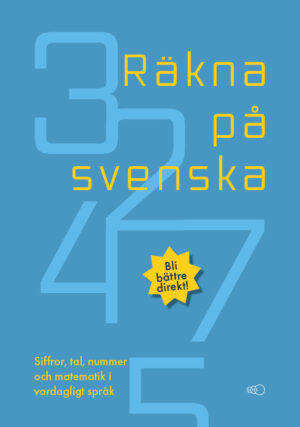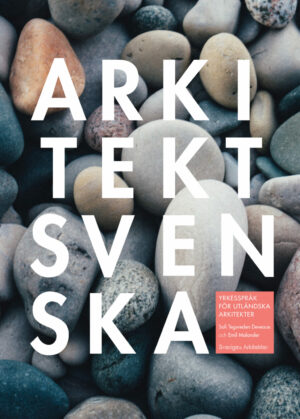A long-read article – settle in.
The proliferation of Nordic Noir in the last two decades was made possible by earlier Scandinavian authors who paved the way with bold and challenging stories set against the everyday realities of life, death, and everything in between. This Land is no Stranger is following in those very impressive footsteps and author Gil Reavill has explores the influences of the genre and the impact they have had on literature, and his own writing.
Written by Gil Reavill, co-author, This Land is no Stranger
BEGINNINGS OF NORDIC NOIR: MARTIN AND KURT
Any subject worth examining has many ways in, and Nordic Noir is no different. Talking about the best classic noir novels, the best Scandinavian mystery books, or the best Swedish thriller series, every person will naturally have a different take on which authors are important and how the genre began.
The pedants among us might mention Frederick Lindholm’s The Stockholm Detective (Stockholmsdetekiven), published in 1893 and not much read today, but touted as the first Scandinavian detective novel. Other early candidates include a number of slavish Sherlock Holmes imitators in the early part of the last century, including the team of S.A. Duse and J. Regis, and Sture Stig, aka Oscar Wagman. Also influenced by British crime writing, Gunnar Serner, using the pseudonym Frank Heller, created an A.J. Raffles-like gentleman-criminal named Philip Collin.
A little later on, Stig Trenter wrote numerous Stockholm-based novels from the mid-1940’s to the 1960’s, featuring a photographer hero and a more hapless police detective. Dagmar Lange, who began writing in the late 1940’s under the pen-name of Maria Lang, employed a sultry female narrator to break open taboo themes, including lesbianism, and set her books in the fictional Swedish village of Skoga.
But for me, the choice of major Nordic Noir pioneers is clear. In my mind the genre truly kicks off with a husband-and-wife team of best-selling Swedish authors, Maj Sjöwall and Per Wahlöö, who wrote in the 1960’s and 70’s. They were followed two decades later by Henning Mankell, a politically fierce Stockholm novelist active around the turn of the millennium. I suggest that any Johnny-come-lately who first encountered great Scandinavian thrillers with Stieg Larsson’s best-selling Girl with the Dragon Tattoo series should immediately drop everything and dip into these earlier authors.
Sjöwall and Wahlöö created Martin Beck, the central character in a series that established many of the conventions of the genre. The ten novels in their “The Story of a Crime” series, beginning with Roseanna in 1965 and ending with The Terrorists in 1975, form a firm foundation which supports everything else that came after. Henning Mankell wrote a detective series that began in 1997 and wound up a little over a decade later. I want to examine three common elements in the Martin Beck and Kurt Wallander books: a focus on team efforts to solve crimes, inclusion of politically conscious themes, and adherence to careful, non-sensational pacing.
A WOLF PACK VERSUS A LONE WOLF
I’ve always been interested in the cross-fertilization between American crime writing and that of Scandinavian authors, and there’s a very clear link in the Martin Beck crime novels. Sjöwall and Wahlöö show the strong influence of Ed McBain’s wildly successful 87th Precinct novels that started with Cop Hater in 1956. McBain established a type of police procedural centered not on a single star detective, in the manner of Sherlock Holmes, but on a police detective squad with several prominent characters. Steve Carella, Meyer Meyer, Bert King, Arthur Brown, and a full dozen other 87th Precinct regulars provided as much drama via their inter-personal relations as any of the crimes involved.
Sjöwall and Wahlöö took this idea and ran with it. Martin Beck of Stockholm’s National Homicide Bureau is only the first among equals. His cohorts, especially Lennart Kollberg, Frederick Melander, and Gunvald Larsson, each contribute characteristic elements to the action. As is the case with the detectives of McBain’s 87th, they don’t all get along perfectly, but the work of solving crimes occurs as a communal effort. Melander is the memory expert, Larrson the muscle, Kollberg the effective foil.
Through the course of the ten novels in the series, flowing one after another in a continual time-line, Sjöwall and Wahlöö create not only various players but an entire team, a wolf pack as opposed to a lone wolf. Perhaps there is a political point being made here, an emphasis on the collective rather than glorification of any single individual—the Swedish “we” rather than the American “me.”
THE WOKE CRIME NOVELIST
Characteristics are easy to identify in this style. Overt political commentary flavors the whole series. The Vietnam War looms in the background of the action. The narrative voice steps back from the story to assess rampant consumerism, conformism, and several other –isms. The important aspect to note is that the authors act not as cheerleaders but as critics of the prevailing forms of democratic socialism in Swedish culture. In contemporary terms, Sjöwall and Wahlöö are “woke” authors, especially when compared with their American equivalents.
The choice of tone might also be considered political. Peter Høeg, author Smilla’s Sense of Snow, names “greed and naivety” as two essential components of American sensibility. If that is the case, then Martin Beck substitutes Old World weariness for New World innocence. He is morose, dyspeptic and chronically suffers colds, the very opposite of “Up With People”-style peppy. A certain sourness and gloom pervades the proceedings. The detectives are not straight-shooting heroes or hard-boiled anti-heroes so much as quite unglamorous human beings. The action is also intentionally under inflated. The crimes are bloody but not grotesque in a Grand Guignol sense—that type of material arrives later, in the genre’s more recent incarnations.
The pace is methodical in the extreme. Martin Beck novels somehow manage to be slow without being boring, a trick that I’ve never been able to master myself. The impulse to crash a car, explode a bomb, slaughter an innocent is ever-present and often, at times difficult to resist. An insistent voice whispers to the author, “Let’s liven things up, shall we?” Sjöwall and Wahlöö turn a deaf ear. The series is subtitled “The Story of a Crime,” and indeed often only a single crime confronts Martin Beck and company in each volume, with many dead ends to bump up against, longueurs to suffer through, and weed-choked Sargasso Seas on which to become becalmed.
Contrast such plodding plotting with the frantic, extravagant, belief-beggaring developments in much contemporary crime fiction, where the body count spirals ever upward, conspiracies spin off wheels-within-wheels subplots, and crimes collide and reproduce. The difference is similar to comparing feverish, MTV-style, rapid-cut editing with a more leisurely approach in a classic black-and-white movie.
So, yes, Sjöwall and Wahlöö might appear a tad creaky to the modern reader. I don’t find them so. On the contrary, the Martin Beck books strike me as consistently engaging. The meticulous pacing has a calming effect. That voice whispering in the reader’s ear says, “What’s the hurry?”
Dated aspects do indeed mark the half-century old Martin Beck series. Most noticeable, to my eyes, is an almost laughable approach to female sexuality. Several plot points turn on a female character referred to as a “nymphomaniac,” an antiquated term for an antiquated concept. In the 1960s, when the first volumes were written, Sweden had developed something of a reputation for open-source sexuality. The concept expresses itself in quaint ways. Every book in the series (save two) includes a loving description of a woman’s nipples, demonstrating an obsessive papillaphilia. Once I noticed this quirk, I read with a feeling of suspense, waiting for the word to once again pop up in the text, so to speak.
A SECOND MASTER
The three foundational figures in Nordic Noir were born about ten years apart: Per Wahlöö in 1926, Maj Sjöwall in 1935, and Henning Mankell in 1948. The first entry in Mankell’s Kurt Wallander series of crime novels, 1997’s Faceless Killers, came more than two decades after the last Martin Beck book, in 1975. But there’s a great commonality in the work of these masters. It’s as if all three wrote out of the same set of cultural assumptions, a comparable communal spirit, and a shared world-view. Either that, or there’s something in the Stockholm water.
Sentence by sentence, and as is said about Jane Austen, it is very hard to catch Mankell being a genius. My favorite riff concerns Kurt Wallander’s father, a painter. Only pere Wallander is a special type of artist, the kind who answers to the dictates of the mass market. He produces the same two works over and other, the same sunset landscape, one with a grouse, one without. This strikes me as one of the most trenchant comments on modern life in all of literature, darkly funny and at the same time vaguely meta. In the world Mankell created, some seven thousand Povel Wallander “originals” grace the walls of humble Swedish homesteads. No word on the grouse/no grouse ratio.
A RAG-TAG COMPANY
The crimes, when they come, are perhaps a little more gruesome, a little more baroque, than those in Sjöwall and Wahlöö. Wallander approaches cases with the same painstaking investigatory procedures as do Martin Beck and company. Wallander comes across as more solitary than Beck. We meet Rydberg, Wallander’s mentor, only briefly before he passes away. Other characters fill out the team, the lab-coated Nyberg, the younger sidekick cop Norén, the long-serving switchboard operator Ebba, but as a dramatic company the group never coheres to the degree of Beck’s cohort.
Linda Wallander, the detective’s daughter, acts as his sounding board and at times his foil, eventually embarking on her own policing career. (Mankell published one novel of projected trilogy featuring Linda as the protagonist, but following the suicide of the actress who played the character on Swedish TV, he abandoned the series). Wallander’s lone friend, Sten Widén, is an opera singer manqué. Their easy companionship establishes a character note for the detective, as a man out of step with pop culture. His coldness toward World Cup soccer mania (in Side Tracked, the fifth novel in the series) drives the point home.
The aspect of Wallander’s life most closely associated with popular tastes is his constant love-hate relationship with fast food. He is consistently melancholic, often considering quitting the police, and predictably gloomy, with a personality reflected in Mankell’s descriptions of the weather. As is the case with Martin Beck, Wallander fails to fall neatly into either the hero nor anti-hero category. It seems that Nordic Noir has invented a third category of protagonist, not hot, not cold, but the middling, or lukewarm hero. It’s a quality that cleaves closely to the average reader’s life, which makes for easy identification.
If the collaborative element in the Wallander books is relatively rag-tag, the political aspect is more clear-cut. The Man Who Smiled draws a bead on corporate globalism. Faceless Killers revolves around issues of immigration and racism, while The White Lioness directly confronts apartheid as a topical subject (comparable to mentions of the Vietnam War in the Martin Beck books). Mankell clearly approaches the crime novel as an ideological weapon, however much he might disguise his intentions within the machinations of plot. It might not be overt, but it’s there, worrying the bad tooth of inequality in Scandinavian culture.
GIVE PACE A CHANCE
I’d have to cite a similar approach to pacing as the primary feature Mankell has in common with his predecessors. When compared to the hyper-drive of much popular fiction, the Wallander series offers a clear alternative. There is little in the way of pyrotechnics, no razzle-dazzle, few fancy plot twists and overall not much to entertain the “entertain us” generation. The narrative voice echoes that of Sjöwall and Wahlöö: “What’s the hurry?” Martin Beck’s headquarters is Stockholm, while Wallander works out of the much smaller town of Ystad, in the county of Skåne on Sweden’s southern coast. So the small-town feel slows things down even more.
For the modern, attention-span-challenged, content-consumer reader, it’s almost maddening, the countless page-after-page passages where nothing happens. And yet inarguably something keeps you tuned in. Maybe the medium is the message, in the sense that the day-to-day pacing, the attention to seemingly insignificant details, and the fearless confrontation with the boredom and frustrations of human existence is exactly the point. It’s the equivalent of Buddhist mindfulness. No moment is valueless.
I once attended a talk by the poet Allen Ginsberg on one of his great influences, the American poet William Carlos Williams. Ginsberg mentioned one of Williams’s poems, wherein the poet enters his kitchen late at night for a glass of water. He turns on the tap then stands in the darkness for a beat, “waiting for the water to freshen.” Ginsberg called the line out to note that almost any other writer, any other human being for that matter, would pass over that moment as not worthy of mention. We would allow our consciousness to elide over it. One of the tasks of poetry, Ginsberg claimed, is to take ownership of such quotidian moments, discarded by memory.
This sort of insistence on the mundane is, I think, the greatest legacy of Sjöwall, Wahlöö and Mankell. It has typified the best of Nordic Noir ever since. In fact, the subsequent history of the genre can be said to be a constant straining against undue contamination by the murder-a-minute, shoot-‘em-up style, heavily influenced by American television and movies. In contrast to this rhythm of constant crisis, the Martin Beck and Kurt Wallander series take pleasure in the slow and methodical.
As Aldous Huxley has it: “The amelioration of the world cannot be achieved by sacrifices in moments of crisis; it depends on the efforts made and constantly repeated during the humdrum, uninspiring periods, which separate one crisis from another, and of which normal lives mainly consist.”
Through the ten Martin Beck books, and the ten Kurt Wallander novels (eleven if you count Before the Frost, which centers on Linda Wallander), the three authors effectively laid down a template for Nordic Noir. The original model has been altered, twisted, updated, fucked with, and even been the target of attempted shattering. But subsequent authors who’ve approached the genre (yours truly included) have never quite managed to ignore the foundational creations of Sjöwall, Wahlöö, and Mankell.


